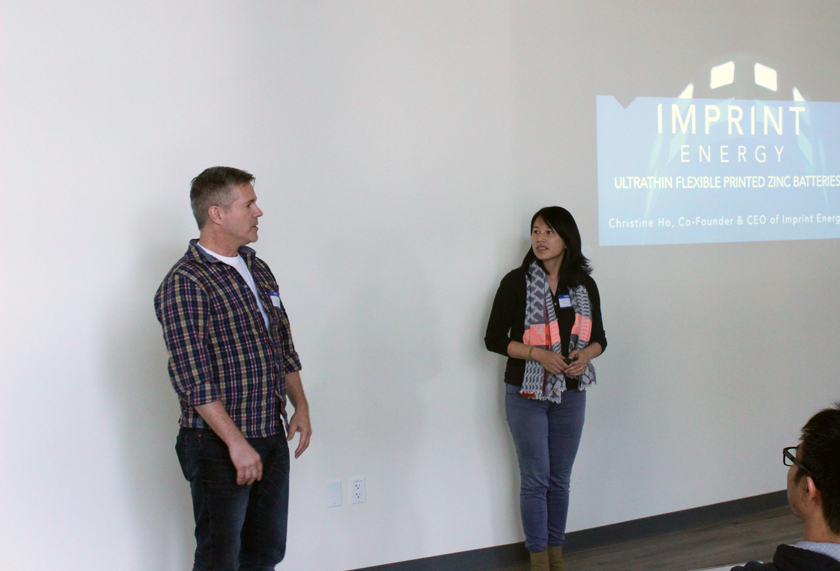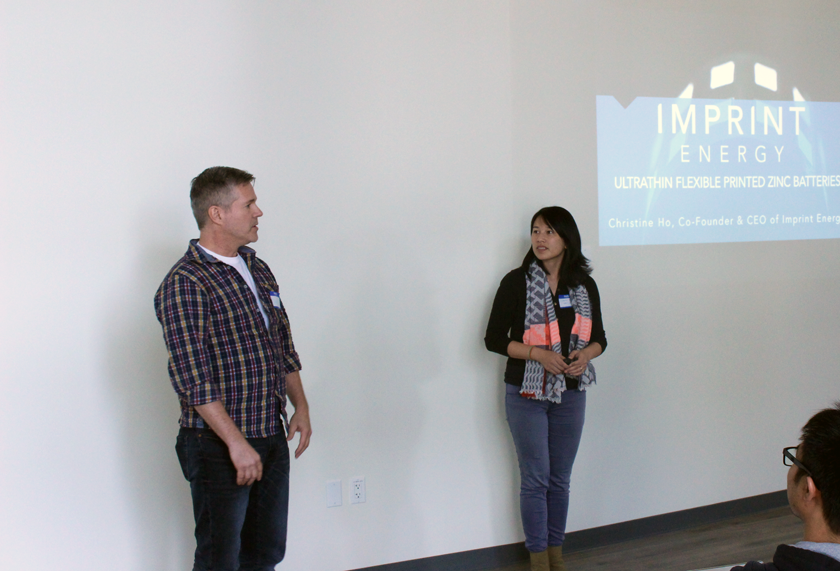Imprint Energy Collider Challenges Students to Create Better Batteries

Imprint Energy CEO Christine Ho visited the Sutardja Center this week to challenge Berkeley students to help her company create better batteries for the emerging wearable and internet of things (IoT) space. Ho developed Imprint’s flexible printed battery while earning her PhD in Material Sciences & Engineering at Berkeley. Since the battery is rechargeable, flexible and thin, it is perfect for the wearable and internet of things (IoT) markets where these attributes are highly desired. Students participating in the collider competition will identify current battery needs in the IoT/wearable markets, figure out what battery data product designers need, and help upgrade battery data sheets to make them more relevant to the space.
Unlike most rechargeable batteries currently on the market, Imprint Energy uses zinc instead of lithium to create its batteries. Since zinc is much safer than lithium, zinc batteries require minimal packaging to house the battery (as opposed to lithium batteries which must be contained in a bulky battery casing to prevent leaks that can lead to fire). Ho got the idea for the battery while working with a printing lab in Japan that wasn’t set up to handle lithium materials. She realized that zinc was stable and reasonably easy to acquire — and that zinc batteries could be easily printed on common industrial screen printers.
Printing a battery with easily acquired materials led Ho to ask the obvious question: why hadn’t zinc batteries already caught on? The main reason was that zinc batteries were not rechargeable (and thus disposable). Modern mobile devices use so much power that their batteries must be rechargeable to be viable. So, Ho solved this issue by developing a new zinc polymer that allowed recharging (which they call Zinc Poly™). This development led to her co-founding Imprint Energy with fellow Berkeley alum Brooks Kincaid in 2010.
Fast forward to 2016, and Imprint Energy now employs 11 full-time and 3 part-time employees and leases 3,150 ft2 of lab space and 2,000 ft2 of office space in Alameda. In 2015, the MIT Technology Review listed Imprint Energy as one of the 50 smartest companies of 2015 (ranking just after Microsoft and just before Uber in the listing).
Imprint Energy has built their business by building partnerships with device companies and startups. They have not and currently do not plan to build a factory to mass produce their battery. Since one of the biggest strengths of their product is that it can be made to fit many form factors, they are more interested in building custom batteries with partners. And because the wearable and internet of things industry is relatively new, the requirements are constantly changing — and Imprint Energy wants to remain flexible to meet these evolving needs.
With the help of Berkeley students in this collider competition, Imprint Energy will gain a better sense of what wearable/IoT innovators currently need and how they can better communicate what they can offer. By making the battery easier to integrate into products, Imprint will help break through one of the biggest barriers in modern electronic design, which will help innovators create new products for us all to enjoy.

